The DTE Notebook for the Urban Organic Vegetable, Herb and Flower Gardener.
Article and photos by Rob Danforth
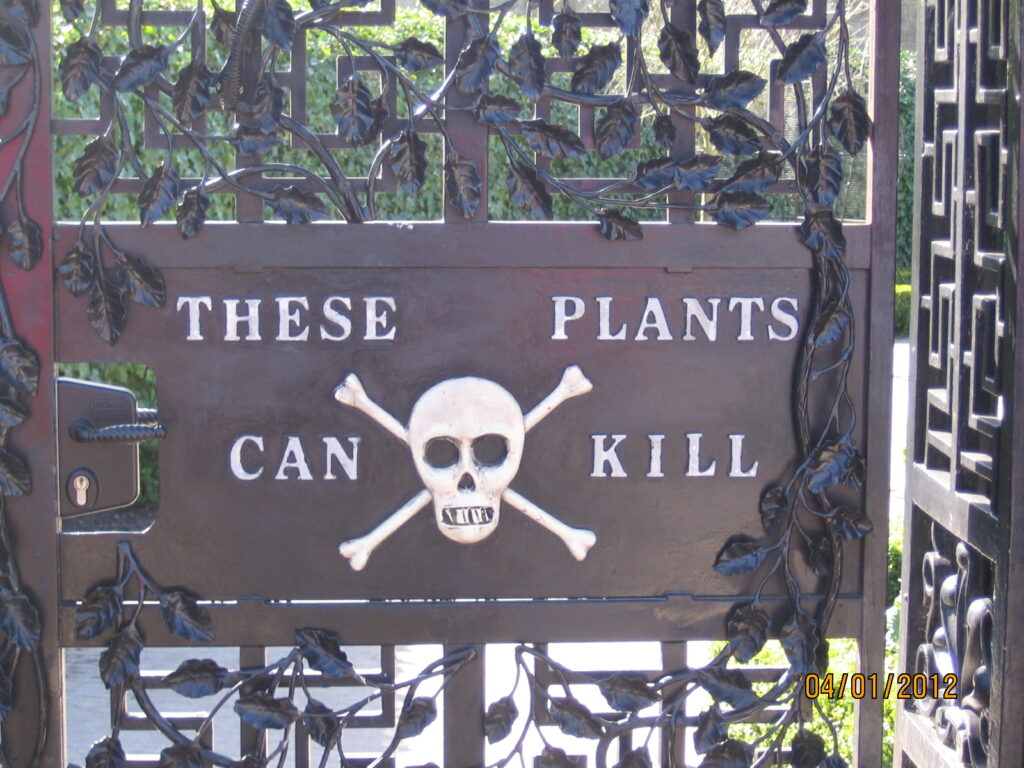
This gate to a poison garden in Alnwick, UK seems a bit exaggerated; however, some plants can actually kill, depending on one’s physical sensitivities. With biodiversity and interplanting to create healthy soil and healthy plants, it is a good idea to know what to keep out of the garden, what not to touch, and especially what not to eat, particularly if children are helping you. I have seen numerous toxic and/or harmful plants growing in and around food plants. Many of them come with the wind, surface ground water on the move, and birds, but some are food plants themselves. A child seeing me pick and eat something from the garden may be tempted to do the same – with, perhaps, unfortunate results. Pets have also suffered from ingesting parts of toxic plants indoors and out.
What to keep out: chemicals which can be topical, water soluble in the soil, or systemic (absorbed inside plants through roots, stems, or leaves): fertilizers, insecticides, fungicides and herbicides. Some fertilizers for flower gardens have ingredients not advised for human consumption.
If you have food plants among the flowers or vice versa, switch to compost as fertilizer. Composted farm manure is also very good, however I am more cautious with manure as all manures may contain pathogens and in practicing organics, I avoid sewage sludge from wastewater treatment plants (see “Milorganite”). According to staff at Robert O Picard wastewater treatment plant, Beacon Hill, these treatment plants remove or neutralize much from sewer waste, but unfortunately not all, as some medicines and chemicals get through. Things may have changed for the better, but I prefer not to gamble.
Although some gardeners recommend homemade insecticide sprays of stewed rhubarb, tomato, potato, or tansy leaves among others, these contain toxins that may harm people either through the windblown spray or by ingesting the sprayed poisons remaining on or in food. When I tried stewed rhubarb spray and tansy; they were not very effective, and a lot more trouble than they were worth.
Sprays of garlic in flowers to repel bugs or cayenne and/or soap on large food items like squashes and eggplants against nibbling critters (particularly squirrels & groundhogs) were more effective and not toxic – but wear a mask and eye protection for cayenne sprays unless you are just sprinkling the dry powder.
To avoid extra work preparing, spraying, respraying, and storing toxic sprays, just use barriers which may not win prizes for good viewing, but they hurt no one and they are certainly dependable.
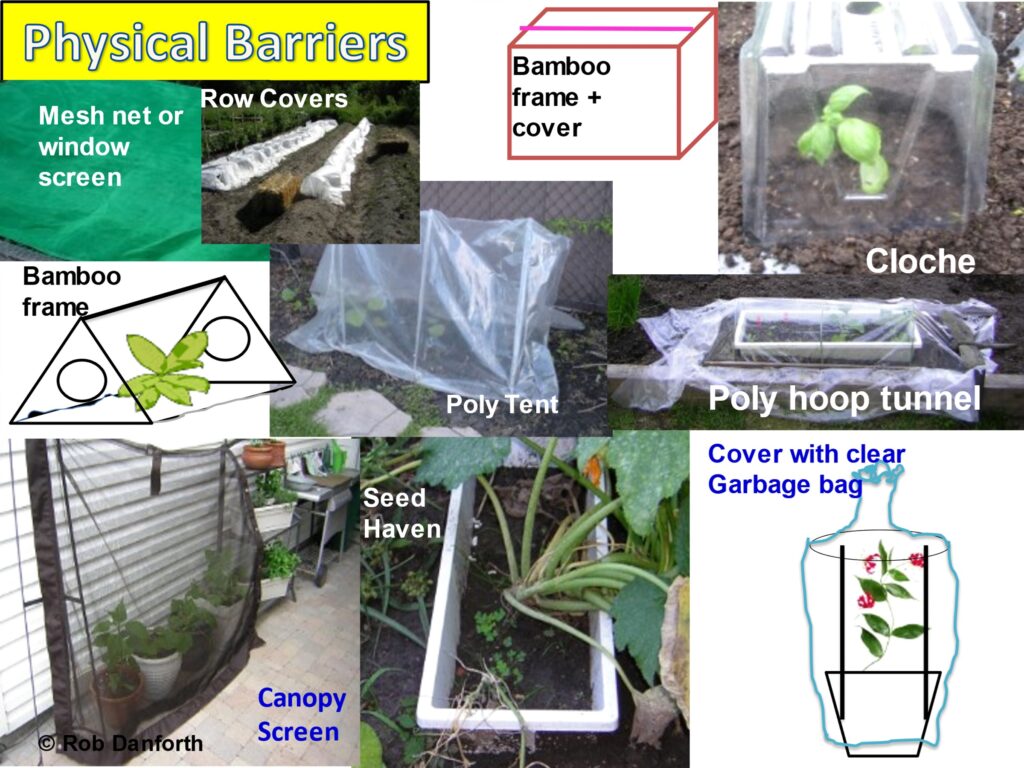
What not to touch without sturdy gloves for protection: any plant you do not know! Nature may bring poison ivy, poison sumac, poison hemlock, deadly nightshade, wild parsnip, giant hogweed, stinging nettles, and others. I have encountered many of them canoeing and backpacking in Ontario and Quebec – some in my backyard – and I have seen live samples in toxic plant demonstration gardens in Alnwick, UK, and in the Montreal Botanical gardens.
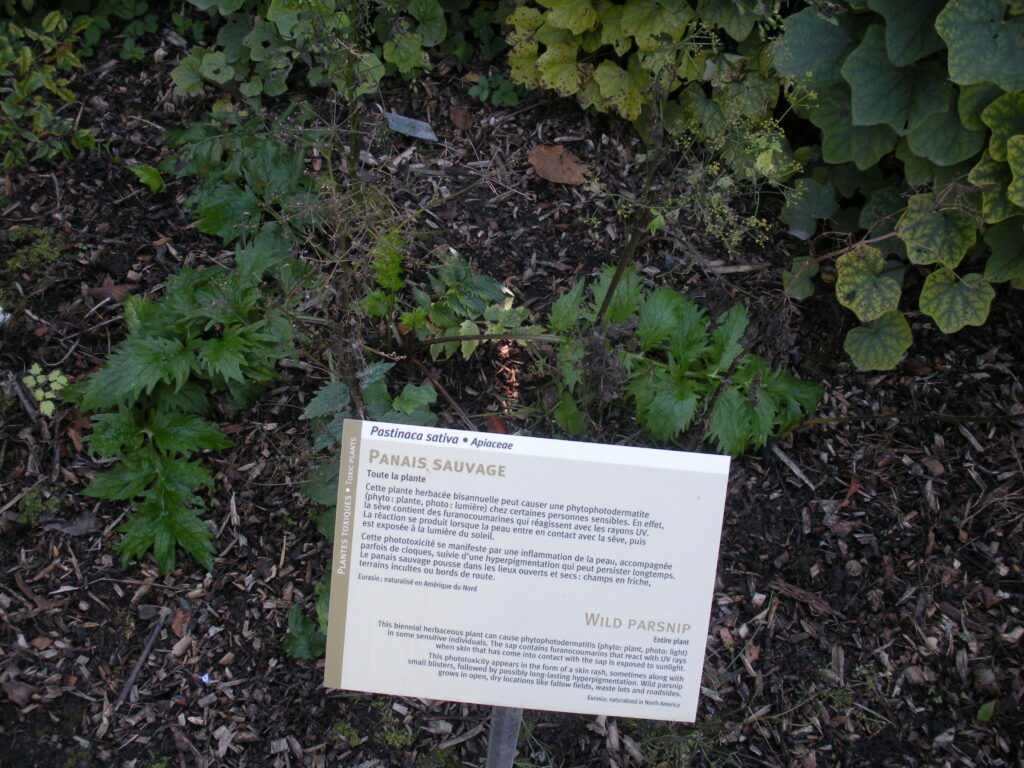
Around Ottawa, I have seen a lot of wild parsnips on roadsides, in fields near food gardens, and along walking trails. I have also seen a lot of deadly nightshades in hedges and on fences in people’s yards. It is an attractive climbing vine with dark colored stem, green distinctively shaped leaves, and berries that turn bright red in the fall. It is a member of the nightshade family (tomato, potato, peppers, & eggplant). When possible, I bring it to the attention of the owners for eradication, but some prefer to keep it regardless. Birds eat the berries and then spread the seeds elsewhere. (FYI: when first discovered, tomatoes were thought to be very poisonous.)
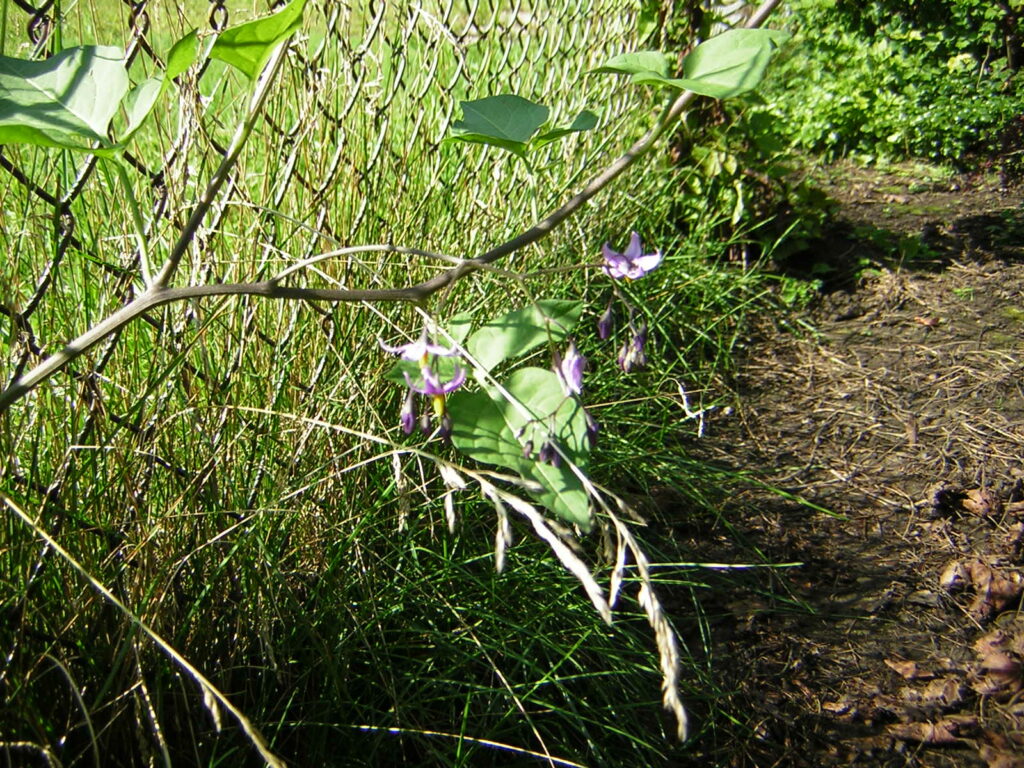
Gloves will protect you from thorns, stings, and toxic sap (e.g., poison ivy & poison sumac). Some toxic saps are sunlight sensitive (e.g., wild parsnip, giant hogweed) and delay severe itching and blistering your skin until exposed to sunlight. When you remove the gloves, avoid all contact with the sap, and wash them in warm soapy water – you might wear rubber gloves to do this. Alternatively, leave the gloves on and wash immediately in warm soapy water.
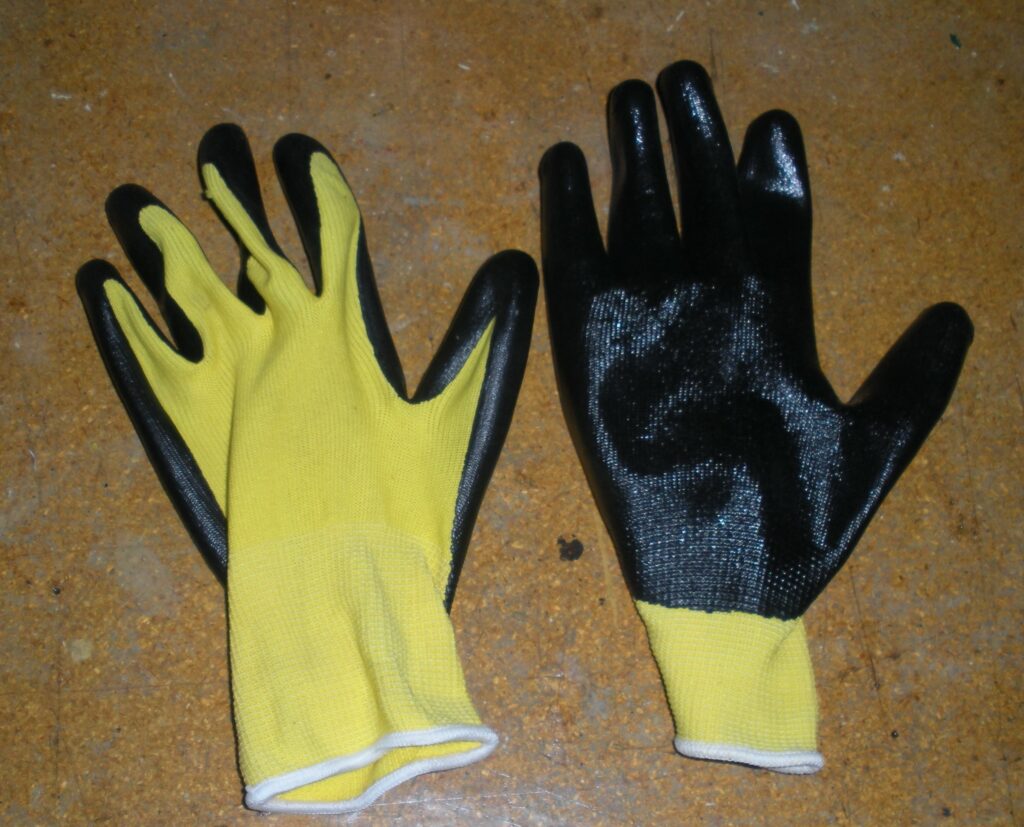
In Algonquin park I met a park naturalist who pulled poison ivy barehanded for 10 years – year 11 put him in hospital with very severe problems from the toxic sap. Only one contact with poison ivy (canoeing the Madawaska) and one with poison sumac (my sister’s backyard) severely sensitized me – I was advised to avoid any more encounters.
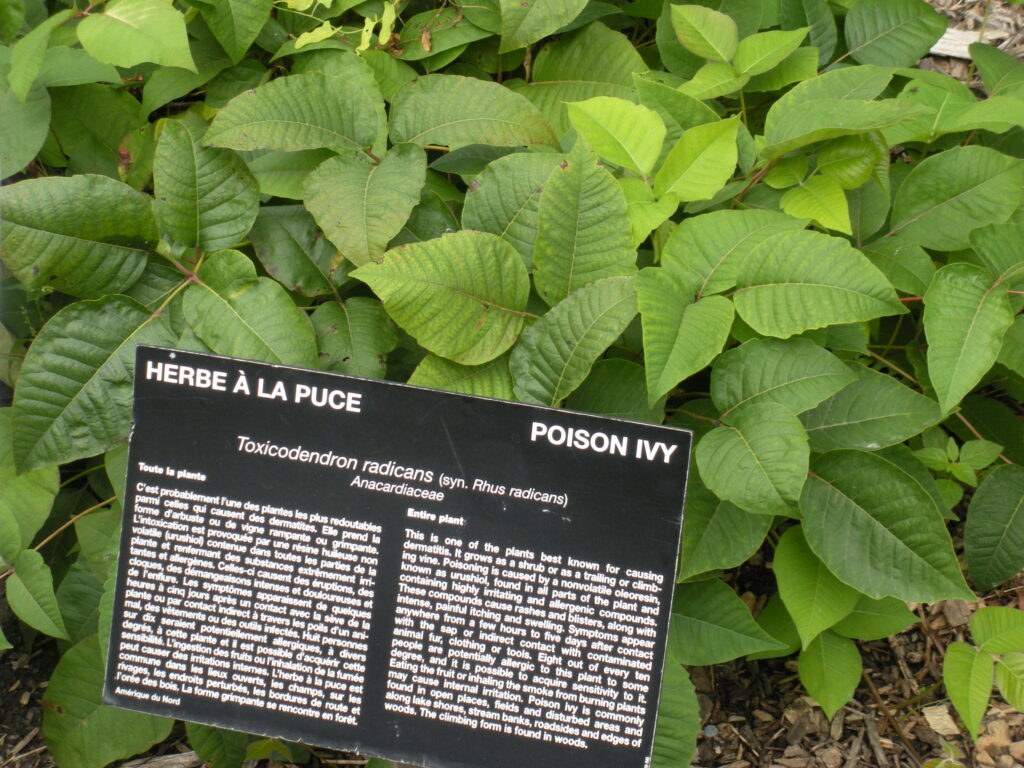
If you do encounter plants like giant hogweed or poison ivy, sumac, or hemlock, (see google for better pictures) please report the sightings to the authorities. A neighbor had to report a large patch or poison ivy creeping through a city fence into her yard.
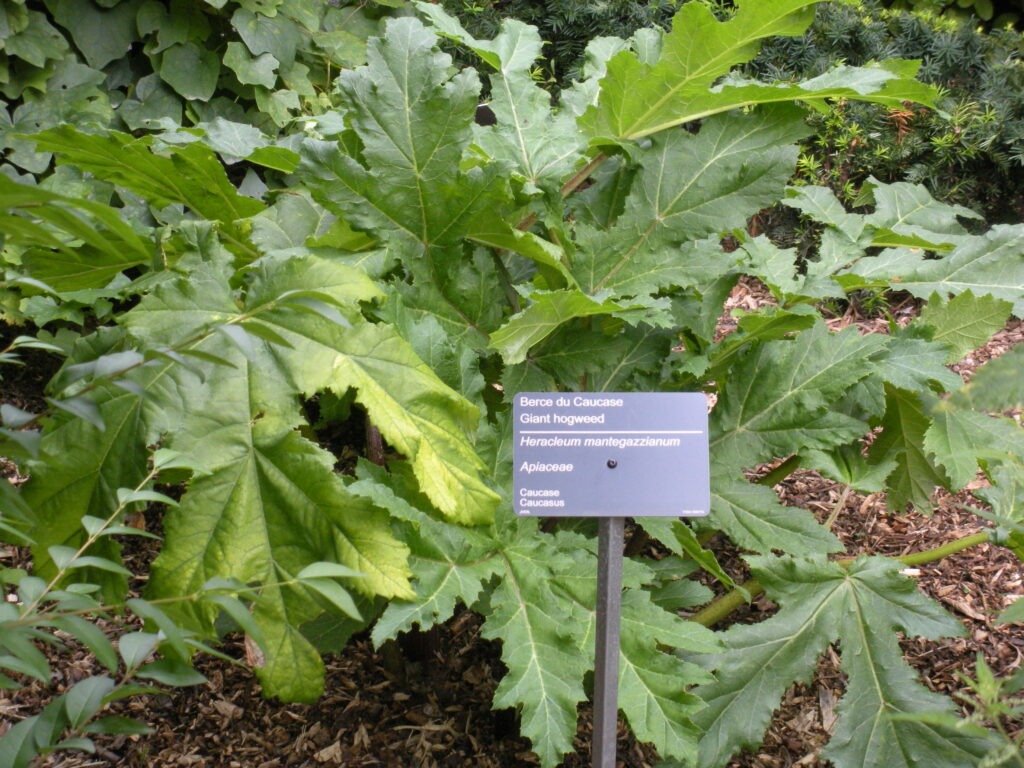
Although we do not deliberately set out to touch them, venom from bees and wasps can also be a problem for some. They are the pollinators and predators that we need in the garden and if your garden provides a good source of food, they will take up residence nearby. If you must avoid contact, garden early in the morning or in the evening when they are docile or inactive. There are also inexpensive bug hats available, and leaving no skin exposed will help keep you safe.
If you have a nest nearby, please leave it be as long as nobody is in danger of anaphylactic shock. If you must destroy it, wear full body cover, and use a blow torch rather than spray chemicals near the garden or in the composter. Torching early in the morning or late in the evening avoids swarms. Tip: unless you aerate (stir) the compost regularly, wasps may take up residence in the composter – especially if you compost a lot of fruit with the vegetable matter. They really like fruit sugars.
We do not have poisonous snakes in Ontario other than the rare Massasauga rattler, mostly in parts of the south west, so snakes are to be encouraged because they help keep the rodent population in check. Snakes (e.g. garter, milk snake, black rat snake) do not like to be touched and they will try hard to avoid you. Even the massasauga rattler has to be provoked into defensive biting, unlike the cobras that kill many gardeners in Thailand (I visited a snake antivenom research farm in Bangkok). Most local snakes are just passing through.
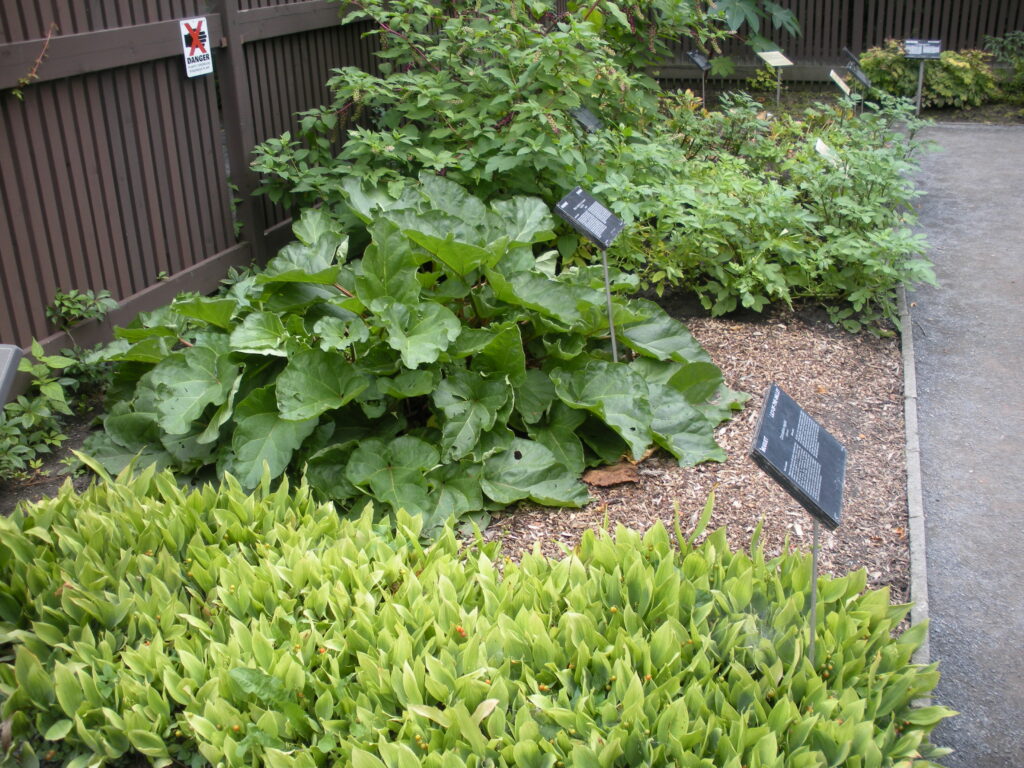
What not to eat: rhubarb leaves (oxalic acid) but stems are ok to eat; all parts of solanaceous plants, but the fruit is ok to eat (tomato, potato, peppers, & eggplant contain solanine toxin); tansy; apple seeds (arsenic); lily of the valley; daffodil; foxgloves; rhododendron; oleander; philodendron; hydrangea; various mushrooms and other fungi; castor bean plants; – just to name a few! – as well as many house plants. Plants have immune systems with natural toxins to help them fend off predators. Some plants boost the toxin levels in their leaves when they are under attack. According to the World Health Organization, we all eat a number of natural vegetable and herb plant toxins which have little or no noticeable effect on most of us, but not all!
Please do the research and then enjoy what you can, or more specifically, what your body will allow you to enjoy.
One gardener’s plants can be another gardener’s reflux, allergy, or toxin.
However, none of the above is a reason to avoid gardening.
Happy, careful gardening!